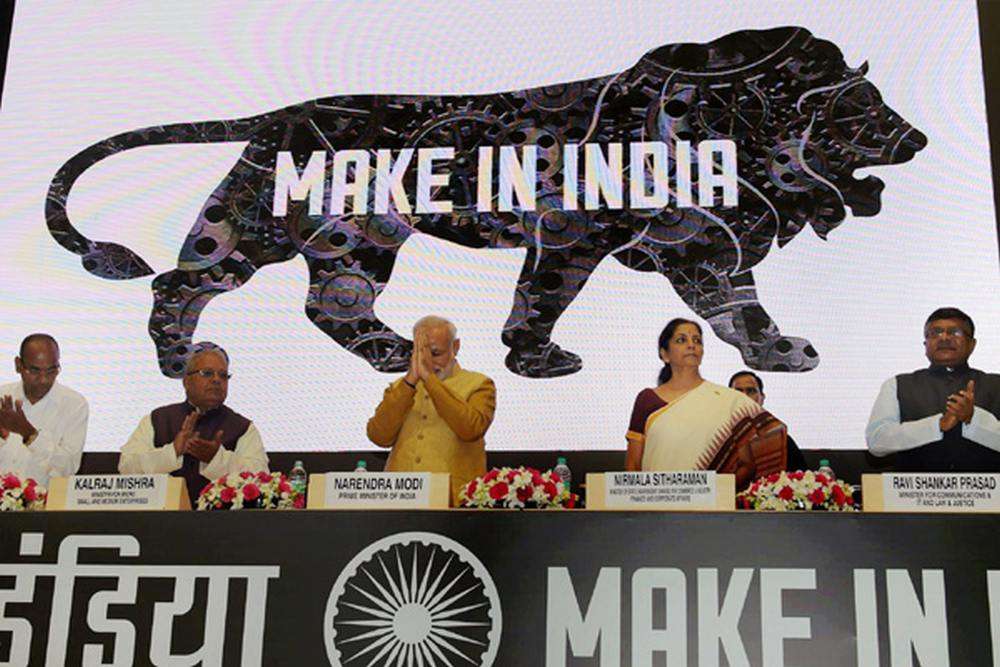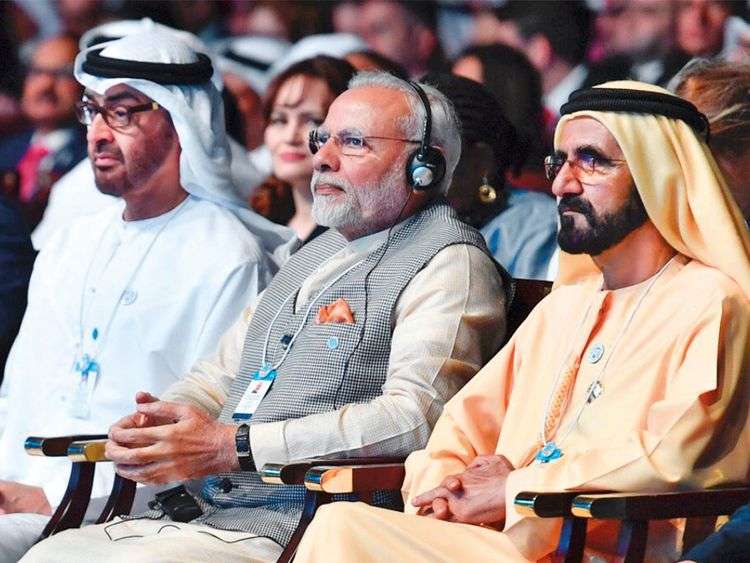Make In India – The New Indian Scheme 2023

Theme: Narendra Modi, who within a matter of months, launched the ‘Make in India’ campaign to facilitate investment, foster innovation, enhance skill development, protect intellectual property & build best-in-class manufacturing infrastructure. Make in India’ recognizes ‘ease of doing business’ because the most essential element to sell entrepreneurship. A range of initiatives have already been undertaken to ease the business environment. The goal is to de-license and de-modify the enterprise in the course of the whole lifecycle. Achievements of the ‘Make in India’ program: With the launch of Make in India, rules and policies are simplified. Now it is much easier to start a company in India. That means Red tape is reduced. India ranked 63rd out of 190 countries in the last World Bank’s Ease of Doing Business Index. Make in India program attracted Foreign Direct Investment (FDI) to India. FDI Equity inflow in Manufacturing Sectors has increased by 76% in FY 2021-22 (USD 21.34 billion) compared to the previous FY 2020-21 (USD 12.09 billion). The India Cellular & Electronics Association (ICEA) in 2018 stated that due to the manufacturing of domestic mobile handsets and components, the country has saved a whopping INR 3 lakh crore rupees of possible outflow in the last four years. This money was saved as the domestically manufactured and assembled handsets replaced the import of completely built units (CBUs). This also provided employment opportunities to approximately 4.5 lakh people. India has emerged as the second-largest mobile phone manufacturer in the world with a 126% jump in production from the financial year 2021-2022, shows government data. The Make in India program has pushed Self-reliance in the defence sector. As of 2021, India’s defence and aerospace manufacturing market has increased to worth Rs 85,000 crore with a private investment of Rs 18,000 crore. Our defence exports increased to Rs 5,711 crore in 2020-21. India had come a long way in the Global Innovation Index (GII) from the 81st rank in 2015 to the 40th rank in 2022. There is a boom of startups in India after launching Make in India. As of 2022, India has more than 100 unicorns (startups with a US$1 billion valuation or above). Several big multinational companies started their manufacturing units in India. New Infrastructure: The availability of modern and facilitating infrastructure is a very important requirement for the growth of the industry. The government intends to develop industrial corridors and smart cities to provide infrastructure based on state-of-the-art technology with modern high-speed communication and integrated logistic arrangements. Existing infrastructure is to be strengthened through the upgradation of infrastructure in industrial clusters. Innovation and research activities are supported through a fast-paced registration system and accordingly, the infrastructure of the Intellectual Property Rights registration set-up has been upgraded. The requirement of skills for the industry is to be identified and accordingly, development of the workforce is to be taken up. New Sectors: ‘Make in India’ has identified 25 sectors in manufacturing, infrastructure and service activities and detailed information is being shared through interactive web-portal and professionally developed brochures. FDI has been opened up in Defence Production, Construction and Railway infrastructure in a big way. New Mindset: The industry is accustomed to seeing Government as a regulator. ‘Make in India’ intends to change this by bringing a paradigm shift in how Government interacts with industry. The Government will partner with industry in the economic development of the country. The approach will be that of a facilitator and not a regulator. Sectoral-Specific Achievements of Make in India: Aerospace & Defence – Indigenous defence products have been unveiled, the Defence Procurement Procedure was amended. Aviation – There was a 5 times increase in FDI, the National Civil Aviation Policy was introduced to boost regional air connectivity, 160 airports, and 18 greenfields airports were approved, and GAGAN was launched as well. Biotechnology – First indigenously developed Rotavirus vaccine was launched, 30 bio incubators and biotech parks are supported, and India’s first Public-Private Partnership agreement was announced between the Indian Council of Medical Research and Sun Pharma. Automotive – There was a 1.7 times increase in the automobile industry; a major investment by global players such as Ford Motors, Mercedes-Benz, and Suzuki Motors was observed. Food Processing – Nine mega food parks were operationalized during 2014-2018, eighty-three cold chain projects were operationalized, and an app called Nivesh Sandhu was launched in 2017. Gems and Jewellery – There was a 4.6 times increase in FDI in the period of 2014-2018, Jewellery Park at Mumbai is being developed. Leather and Leather Products – A program called Indian Footwear, Leather & Accessories Development Programme was launched in 2017, and approximately 4.44 lakh people have been trained. Media and Entertainment – There was a 1.8 times increase in FDI in Information & Broadcasting, the Print Media Advertisement Policy, 2016 was launched, National Film Heritage Mission was launched. Railways – The first semi-high-speed train called Gatimaan Express and a luxury train called ‘Vande Bharat‘ was launched, and an investment of INR 15,000 crore was achieved through Public-Private Partnership. Tourism – Schemes such as Swadesh Darshan and PRASAD were launched. Challenges: Though improved, the ease of doing business in India is not up to the mark. Private firms, especially larger firms are complaining about regulatory obstacles. There is a shortage of skilled manpower in India. Though the situation has improved, still there is a gap between the demand and supply of skilled manpower. Though many industries are planned to be set up and inaugurated, many of those projects are not implemented yet. Many workers in India’s manufacturing companies are getting very low wages. Conclusion: The ‘Make in India’ program is a success in creating a favourable environment for manufacturing companies. Its effect on the Indian economy is clearly visible. The program is helping India in achieving self-sufficiency.
The strong India-UAE Relation: 2022-2023

Theme: The India-UAE relationship is booming and benefitting more people in the country by boosting India’s economy. UAE has become the 4th largest investor in India. India’s approach toward Free Trade Agreements (FTAs) is undergoing with more awareness of reaching meaningful markets to get admission to and facilitating the integration of the Indian industry into worldwide value chains. In this weblog let us know more about the India-UAE relationship, history, data and much more. CEPA CEPA – Comprehensive Economic Partnership Agreement (CEPA) between the Government of the Republic of India and the Government of the United Arab Emirates (UAE). CEPA is a full and deep Agreement signed on 18 February 2022, during a virtual summit between the Prime Minister of India, Shri Narendra Modi and the President of the UAE and Ruler of Abu Dhabi, Highness Sheikh Mohamed bin Zayed Al Nahyan. CEPA entered into force on 01 May 2022. The Commerce Secretary said that both sides are continuing to work together to further improve the Ease of Doing Business between the two countries. Representatives from Industry mentioned the experience of leveraging upon the CEPA to register significant growth in their respective sectors. India-UAE Relation 2023 Utilization of the India-UAE CEPA has been increasing steadily on a month-on-month basis. The number of Preferential Certificates of Origin (COOs) issued under the CEPA increased from 415 in May 2022 to 8440 in March 2023. Over 54,000 COOs were issued under the CEPA during the 11-month (May 22 – March 23) period. India-UAE bilateral relations – The History India and the UAE installed diplomatic members of the family in 1972. The extra push has been done by bilateral family members while the visit of India’s Prime Minister to the UAE in August 2015 marked the beginning of a new strategic partnership between the two nations. Further, for the duration of the visit of the Crown Prince of Abu Dhabi to India in January 2017 as the chief visitor at India’s Republic Day celebrations, it turned into an agreement that bilateral family members had been to be upgraded to a comprehensive strategic partnership. This gave momentum to launch negotiations for an India-UAE complete financial partnership agreement. What is the Economic Significance of the India-UAE relationship? The UAE has emerged as an important economic hub not just within the context of the Middle East/West Asia, but additionally globally. The UAE, because of its strategic location, has emerged as an essential financial centre globally. In recent years, the UAE, through its ‘Vision 2021’, has sought to diversify its financial system and decrease its dependency on oil. Since 2012, the increase has been led, in step with a World Trade Organisation file, with the aid of the non-hydrocarbon sectors reflecting the hit diversification of the economy. Although the UAE has various its economy, the hydrocarbon region stays very essential followed through offerings and manufacturing. Within services, financial services, wholesale and retail change, and real estate and business services are the principal individuals. What About India’s Economic Ties with UAE? The India-UAE overall alternate merchandise has been worth U.S.$52.76 billion for the first six months of 2022-23, making the UAE India’s 1/3 largest trading accomplice. The purpose is to reinforce bilateral products change to above U.S.$100 billion and services alternate to U.S.$15 billion in 5 years. An alternate agreement is likewise an enabler for 2-way investment flows. The UAE’s funding in India is anticipated to be around U.S.$ 11.67 billion, which makes it the 4th biggest investor in India. Also, many Indian groups have set up production units both as joint ventures or in Special Economic Zones for cement, constructing substances, textiles, engineering merchandise, client electronics, and so forth, in the UAE. Many Indian companies have also invested in the tourism, hospitality, catering, health, retail, and education sectors. Under India’s made over FTA strategy, the Government has prioritised at least six countries/areas to address, which the UAE figures on the pinnacle of the listing for an early harvest deal (or Interim Trade Agreement), the others are the United Kingdom, the EU, Australia, Canada, Israel and a group of countries in the Gulf Cooperation Council (GCC). The UAE too announced in advance its intention to pursue bilateral monetary agreements with India and seven different countries (U.K., Turkey, South Korea, Ethiopia, Indonesia, Israel, and Kenya). What is an Interim Trade Agreement (ITA)? An interim or early harvest trade settlement is used to liberalise tariffs at the alternate of sure items between international locations or trading blocs before a complete FTA is concluded. The authorities’ emphasis on meantime agreements can be tactical so that a deal can be completed with minimal commitments and might allow for contentious issues to be resolved later. Recently, India and Australia announced plans to finish an ITA. Salient Features of CEPA: Trade in Goods: The CEPA affords preferential marketplace get right of entry to over 80% of products traded between India and the UAE. India will enjoy the discount or removal of price lists on its exports to the UAE, specifically in sectors such as gems and jewellery, textiles, leather-based, footwear, sports activities goods, plastics, furniture, agricultural and wooden merchandise, engineering merchandise, clinical gadgets and cars. Trade in Services: The CEPA covers 11 broad carrier sectors and greater than 100 sub-sectors, including business offerings, communique services, production and associated engineering offerings, distribution services, instructional services, environmental services, financial services, health-associated and social offerings, tourism and travel-related offerings, leisure cultural and sporting offerings and transport offerings. Both nations have provided enhanced marketplaces to get an entry for each different service carrier across these sectors. Investment: The CEPA presents a liberal and non-discriminatory regime for pass-border investment between India and the UAE. It additionally includes provisions for, dispute agreements and cooperation on funding facilitation. Some Other Areas of Cooperation: Protection and promotion of investments Technical barriers to trade (TBT) Sanitary and phytosanitary (SPS) measures Dispute settlement Movement of natural persons Pharmaceutical products Intellectual property rights (IPR) Indian Exports to the UAE: At present, Indian exports to
